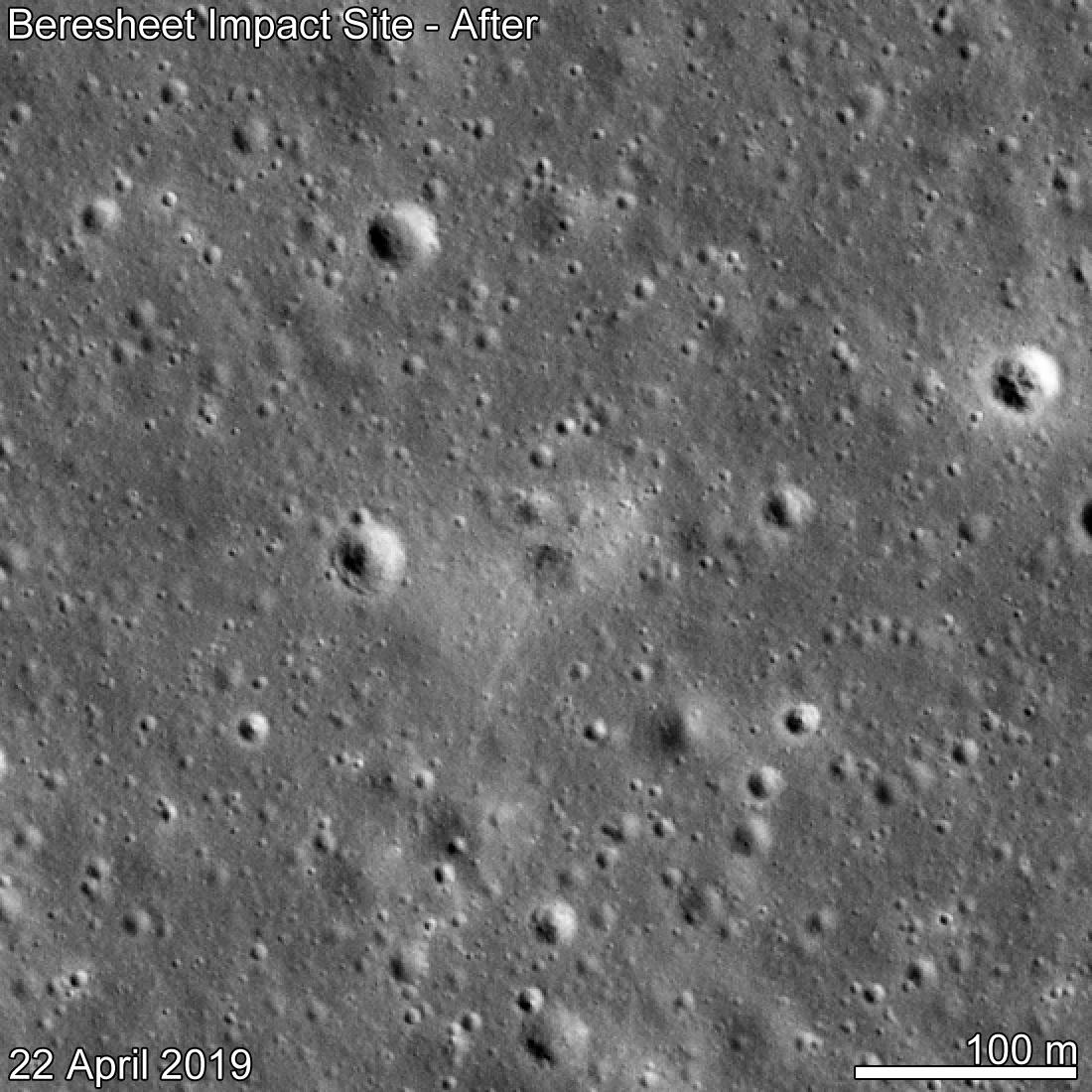April was supposed to be an exciting time for Israel’s privately-funded space group SpaceIL. After years of development, SpaceIL’s Beresheet lander was poised to land on the lunar surface, which would have been a first for the country as well as the first privately-funded mission to touch down on Earth’s satellite.
Unfortunately, things didn’t go as planned, and a malfunction in the spacecraft’s engine caused the entire ship to shut down just moments before it was to land. A rapid restart of the craft brought it back online but it was already speeding towards the surface and a crash was unavoidable. Now, thanks to NASA’s Lunar Reconnaissance Orbiter, we can see exactly where the doomed craft ended up and, well, it’s not a pretty sight.
Beresheet’s mechanical woes came at the absolute worst possible time. Details regarding the glitch have been scant, but a report from SpaceIL revealed that a “manual command” triggered a series of events that cause the spacecraft’s main engine to power down. Engineers did manage to get the engine back on, but the precious seconds that were lost during its descent meant that there was no way to slow the lander down enough to perform a soft landing.

When Beresheet struck the Moon it was moving very fast. According to NASA, its speed was around 1,000 meters per second higher than its team had planned for, and when the lander contacted the surface it was completely destroyed.
The images from NASA’s lunar orbiter show the aftermath, in the form of a long dusty streak that leads to a dark area where the lunar dust has been kicked up and pushed away. The lander itself is sitting somewhere near that darkest area, and it’s likely in several pieces.
The good news is that SpaceIL isn’t taking this defeat lying down, and it has already announced that it plans to launch “Beresheet 2.0,” in an attempt to complete a soft landing on the lunar surface.







